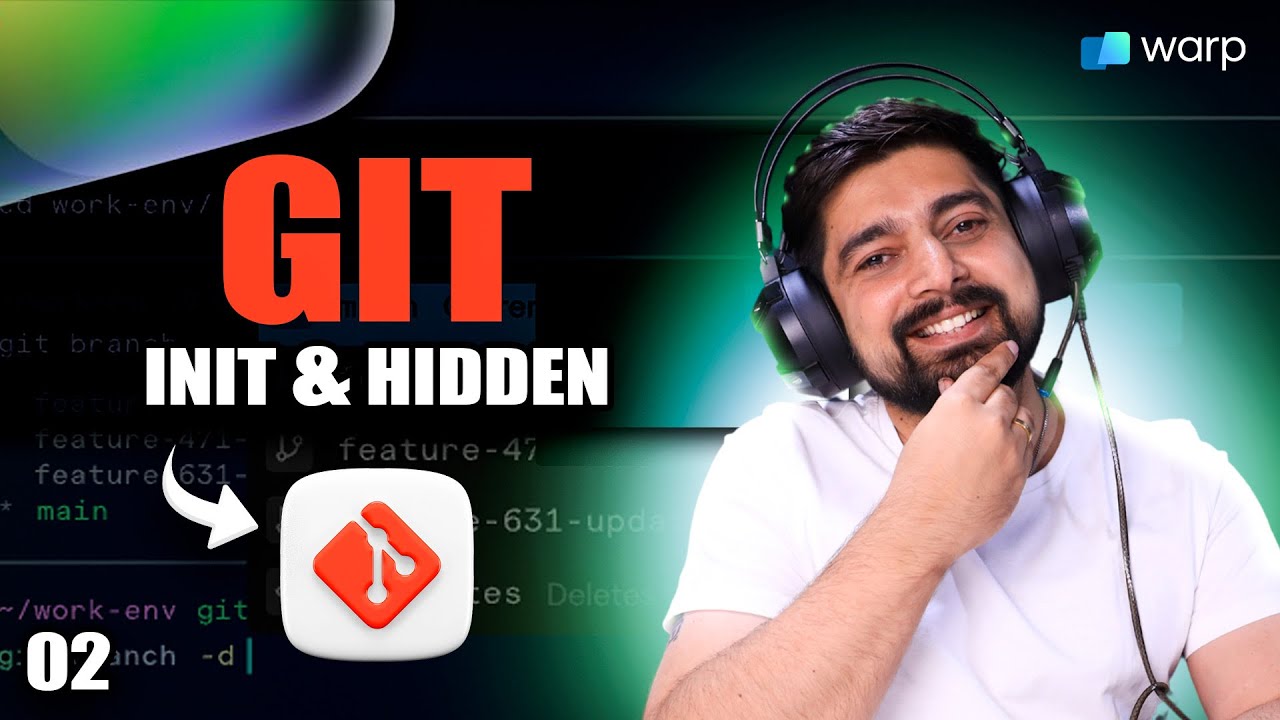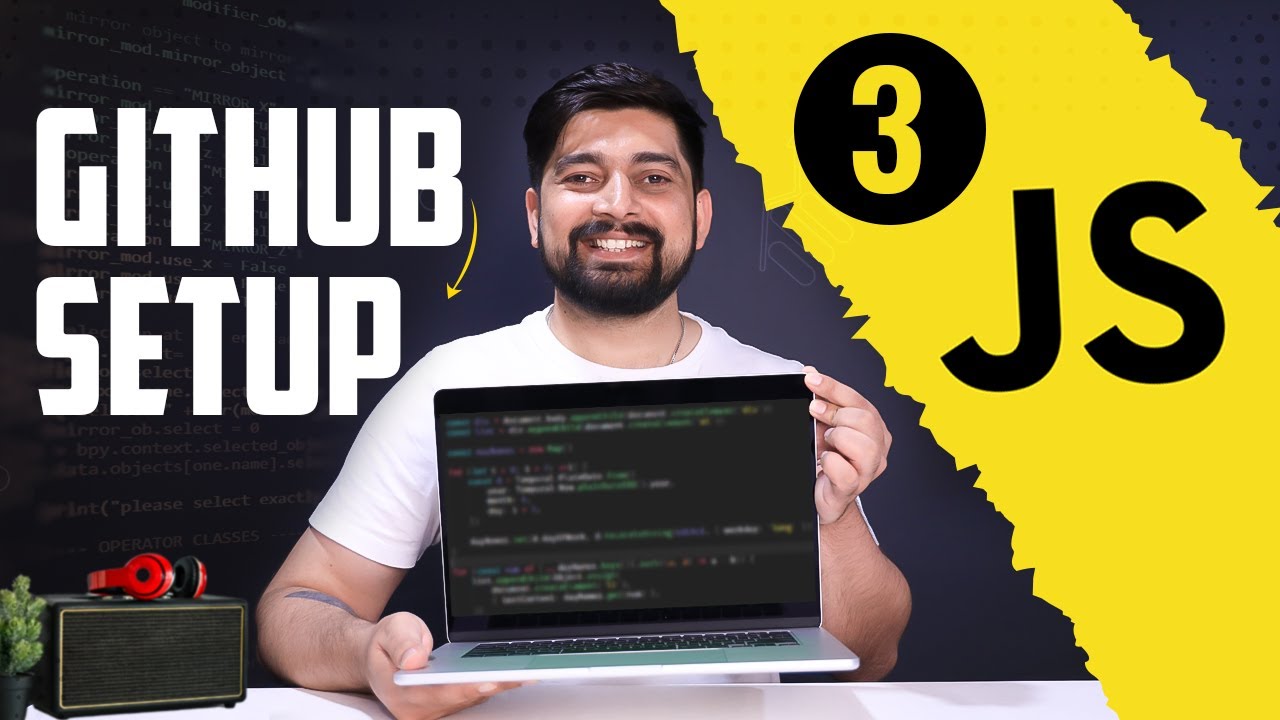Configure your Git
Summary
TLDRIn this video, the presenter walks through the process of configuring Git for an optimized and streamlined workflow. By customizing Git settings, the presenter demonstrates how to create aliases for commonly used commands, adjust output formats for clarity, and set up shortcuts to speed up repository management. The focus is on enhancing efficiency by shortening command inputs, improving commit processes, and tailoring Git’s behavior to personal preferences. The video covers key configuration files, shell setups, and essential tweaks that make working with Git faster and more user-friendly, ideal for developers looking to refine their Git experience.
Takeaways
- 😀 Editing Git configurations manually can enhance workflow and provide more control over the setup.
- 😀 Setting up aliases for common Git commands like 'gs' for 'git status' or 'gd' for 'git diff' helps speed up the process.
- 😀 A personalized shell configuration (e.g., .zshrc or .bashrc) makes repetitive tasks more efficient by reducing typing.
- 😀 Customizing the Git clone URL using shortcuts like 'CJ:' for GitHub repositories can save time and avoid long URLs.
- 😀 Configuring default branch names (e.g., 'dev' instead of 'master') helps streamline project setup and workflow.
- 😀 Fine-tuning the 'git status' output can improve readability by showing stash info and untracked files more clearly.
- 😀 Using Git’s 'git diff' and 'git add --patch' allows for more granular control when staging changes, making it easier to review changes before committing.
- 😀 Committing changes with a default template and predefined prefixes for commit messages improves consistency and workflow efficiency.
- 😀 Setting up push and pull behaviors like 'auto setup remote' and 'default to current' ensures that Git commands are quicker and more predictable.
- 😀 Enhancing 'git log' output with graphical views, concise commit hashes, and relevant information improves the understanding of commit history.
Q & A
Why does the speaker prefer editing Git configuration files manually instead of using the `git config` command?
-The speaker prefers editing Git configuration files manually because it gives them more control and flexibility, allowing them to configure the settings as they wish without relying on a command interface.
What is the purpose of setting up aliases in the shell configuration file?
-The purpose of setting up aliases like 'gs' for 'git status' and 'gd' for 'git diff' is to make Git commands faster and easier to type, reducing the amount of typing required for frequent operations.
What are some of the general configuration options the speaker sets in their Git config?
-The speaker sets options like the user name and email, compression level for network transfers, enabling whitespace errors to catch trailing spaces, and disabling various advice messages to streamline their workflow.
How does the speaker optimize the cloning process for repositories?
-The speaker uses URL shortcuts in their Git config to simplify cloning repositories. For example, they create shortcuts like 'CJ:' for their own repositories or forks on GitHub to avoid typing long URLs repeatedly.
Why does the speaker prefer to have 'dev' as the default branch name instead of 'master'?
-The speaker prefers 'dev' as the default branch name because it is shorter and works better with their workflow, making it more convenient for daily tasks.
What specific improvements does the speaker make to the output of 'git status'?
-The speaker modifies 'git status' to show the current branch, stash info, and all untracked files without grouping them into directories, providing a clearer and more detailed view of the repository status.
How does the speaker improve the 'git diff' command's output?
-The speaker customizes 'git diff' by removing the '+' and '-' signs and instead using colors to highlight changes. They also reduce the number of context lines for a more compact output and enable the 'diff-so-fancy' tool for improved visual presentation.
What is the 'git add patch' command, and how does it benefit the speaker's workflow?
-The 'git add patch' command allows the speaker to stage changes interactively, confirming or rejecting each hunk of code individually. This enables finer control over which changes to stage, enhancing precision and reducing errors.
Why does the speaker use a commit message template, and how does it work?
-The speaker uses a commit message template to standardize commit messages and include common prefixes for different types of changes. This ensures consistent and informative commit messages, which improves project clarity and collaboration.
What is the significance of using GPG signing for commits?
-GPG signing commits ensures the authenticity of the author's changes, adding an extra layer of security and trust to the commit history. It verifies that the commits genuinely come from the configured author.
Outlines

Dieser Bereich ist nur für Premium-Benutzer verfügbar. Bitte führen Sie ein Upgrade durch, um auf diesen Abschnitt zuzugreifen.
Upgrade durchführenMindmap

Dieser Bereich ist nur für Premium-Benutzer verfügbar. Bitte führen Sie ein Upgrade durch, um auf diesen Abschnitt zuzugreifen.
Upgrade durchführenKeywords

Dieser Bereich ist nur für Premium-Benutzer verfügbar. Bitte führen Sie ein Upgrade durch, um auf diesen Abschnitt zuzugreifen.
Upgrade durchführenHighlights

Dieser Bereich ist nur für Premium-Benutzer verfügbar. Bitte führen Sie ein Upgrade durch, um auf diesen Abschnitt zuzugreifen.
Upgrade durchführenTranscripts

Dieser Bereich ist nur für Premium-Benutzer verfügbar. Bitte führen Sie ein Upgrade durch, um auf diesen Abschnitt zuzugreifen.
Upgrade durchführenWeitere ähnliche Videos ansehen

Master Git Init: Unlock the Secrets of the Hidden .git Folder in 20 Minutes

Save and work on Github for Javascript | chai aur #javascript

How Git Works: Explained in 4 Minutes

What is Vite? How does it work? Explaining all the files in a generated React + TypeScript App

Git - 02 Configurando o GIT

Curso Gratuito - Git - Básico ao Avançado: Instalação do Git
5.0 / 5 (0 votes)
